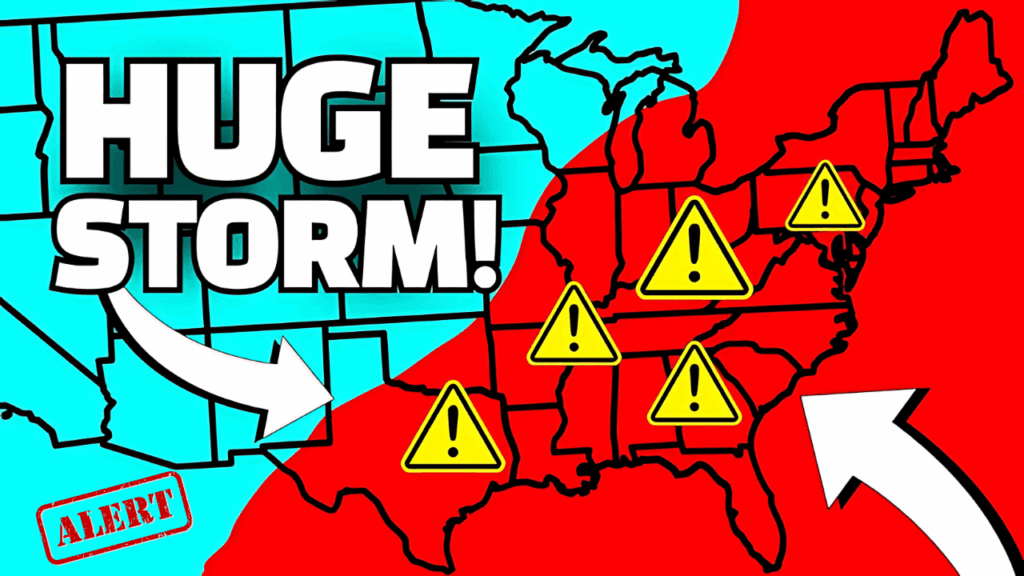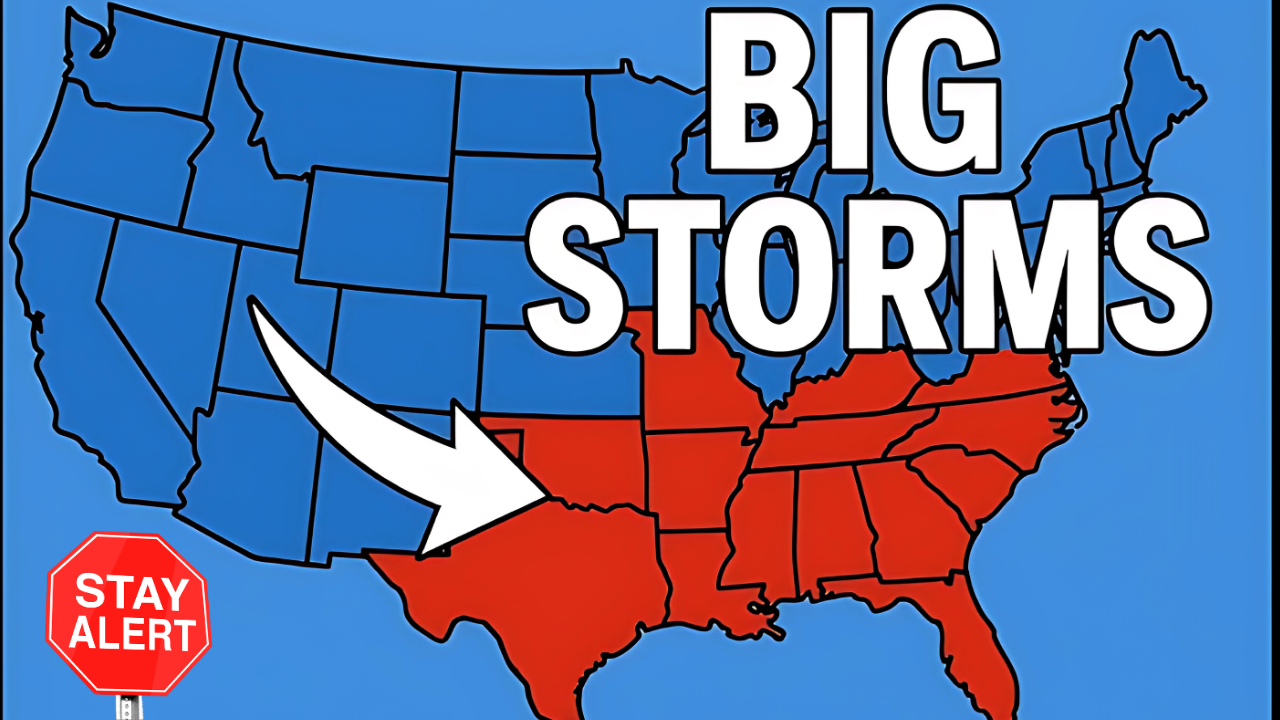As summer approaches, coastal communities across the Atlantic basin are bracing for what meteorologists predict will be another challenging hurricane season. The 2025 Atlantic hurricane season, which officially began June 1st, has experts on high alert due to a combination of environmental factors that could fuel more intense storms than usual.
Living through recent devastating hurricanes like Helene and Milton has taught us that preparation isn’t just recommended—it’s essential for survival. This year’s forecast brings both concern and opportunity: concern for what nature might unleash, but opportunity to apply hard-learned lessons about emergency readiness.
What Experts Are Predicting for 2025
Above-Average Activity Expected
Multiple forecasting agencies, including the National Oceanic and Atmospheric Administration (NOAA) and Colorado State University, have issued remarkably consistent predictions for the 2025 season. NOAA forecasts 13 to 19 named storms, with 6 to 10 developing into hurricanes, and 3 to 5 reaching major hurricane strength.
These numbers represent a 60% chance of above-normal activity, significantly higher than typical seasons. AccuWeather’s forecast aligns closely, predicting 13 to 18 named storms with a 20% chance of exceeding 18 storms.

The Science Behind the Predictions
What’s driving these ominous forecasts? Over 60 percent of the Gulf of Mexico currently shows record or near-record warmth for this time of year, with waters east of Florida and around the Bahamas as warm as meteorologists have observed for any hurricane season start in the satellite era.
Warm ocean water acts like high-octane fuel for tropical systems. When sea surface temperatures exceed 79 degrees Fahrenheit, hurricanes can form and rapidly intensify. This year’s exceptionally warm waters create perfect conditions for storm development and strengthen systems that might have remained weaker in cooler years.
Additionally, neutral ENSO conditions are expected to persist, meaning there’s no El Niño present to create wind shear that typically tears storms apart. This atmospheric setup removes one of nature’s natural hurricane suppressors.
Understanding Your Risk Level
Geographic Vulnerability
Northern and eastern portions of the Gulf Coast and the Carolinas face higher-than-average risk of direct impacts this season. However, 2024’s Hurricane Helene reminded us that hurricane dangers extend far inland, bringing catastrophic flooding to mountain communities hundreds of miles from the coast.

Timeline Considerations
The season could start fast with potential pre-season development, experience a mid-summer lull, then finish with intense late-season activity. This pattern mirrors 2024, when 13 of 18 named storms occurred between September and mid-November.
Peak hurricane season traditionally occurs around September 10th, but recent years have shown that dangerous storms can develop at any point during the six-month season.
Brennan says. Helene and its aftermath, which killed 248 and caused almost $80 billion in damage
Building Your Hurricane Emergency Kit
Essential Survival Supplies
Surviving a major hurricane requires planning for multiple scenarios: sheltering in place without power, potential evacuation, and extended recovery periods. Your emergency kit should sustain your family for at least 72 hours, though a week’s worth of supplies provides better security.
Water Storage and Purification Store one gallon of water per person per day for several days, accounting for drinking and sanitation needs. Use food-grade plastic containers, avoiding milk jugs or glass bottles that can break. Include water purification tablets or portable filters as backup options.
Food Selection Strategy Focus on non-perishable items that require minimal preparation. Canned meats, fruits, and vegetables provide nutrition without refrigeration. Pack a manual can opener and disposable utensils. Include energy bars, nuts, and dried fruits for quick nutrition.
Power and Communication Battery-powered or hand-crank radios, especially NOAA Weather Radios, provide critical weather updates when cell towers fail. Maintain multiple flashlights with extra batteries. Consider solar-powered chargers for essential devices.
Medical and Personal Care
Prescription Medications About half of all Americans take prescription medications daily, and emergencies can make pharmacy access impossible. Maintain at least a two-week supply of all medications in waterproof packaging.
First Aid Essentials Assemble comprehensive first aid kits for home and vehicles, including antiseptics, gauze, pain relievers, and personal medical equipment. Include thermometers, blood pressure monitors, and other devices family members require.
Hygiene and Sanitation Pack toilet paper, feminine hygiene products, hand sanitizer, disinfectant wipes, and plastic bags for waste disposal. These items become critically important when normal services are disrupted.
Document Protection and Financial Preparedness
Safeguarding Important Papers
Store copies of insurance policies, identification, and bank account records electronically or in waterproof, portable containers. Include recent photographs of your property for insurance claims.
Create digital backups stored in cloud services that you can access from any location. Physical copies should remain in easily accessible waterproof bags positioned above potential flood levels.
Financial Emergency Planning
Keep emergency cash in small denominations since ATMs may not function during power outages. Include coins for pay phones or vending machines. Maintain separate emergency funds for each family member.
Home Preparation and Protection
Structural Preparations
Before storm season begins, inspect your property for vulnerabilities. Trim trees away from power lines and structures. Secure outdoor furniture, decorations, and equipment that could become projectiles in high winds.
Install storm shutters or prepare plywood covers for windows. Know how to shut off utilities safely, including gas, electricity, and water mains. Clear gutters and drainage systems to handle heavy rainfall.
Technology and Communication Plans
Charge all electronic devices before storms approach. Download offline maps and important apps. Establish social media communication plans, as these platforms often remain functional when traditional communication fails.
Program emergency contacts into multiple devices and write them down as backup. Include local emergency services, out-of-state contacts, and insurance companies.
Special Considerations for Vulnerable Populations
Pet Preparedness
Most emergency shelters don’t admit pets, so arrange alternative housing with friends, family, or pet-friendly facilities well in advance. Pack week-long supplies of food, water, medications, and comfort items.
Ensure pets wear current identification tags and have updated microchip information. Include leashes, carriers, and crates essential for evacuations or shelter stays.
Elderly and Disabled Family Members
Plan additional assistance for family members with mobility issues, chronic medical conditions, or cognitive impairments. Arrange transportation, medication management, and specialized equipment needed during emergencies.
Register with local emergency management for special needs assistance programs available in your community.
During the Storm: Safety Protocols
Sheltering Guidelines
Choose interior rooms on the lowest floor, away from windows and potential flooding. Avoid upper floors during high winds, but stay above potential flood levels. Monitor weather updates continuously through battery-powered radios.
Never venture outside during the eye of the storm—winds will resume with equal or greater intensity from the opposite direction.
Evacuation Procedures
Don’t wait until the last minute to evacuate, as rescue officials may not allow pets during emergency rescues. Follow evacuation orders immediately when issued by authorities.
Use designated evacuation routes and avoid shortcuts that may be flooding or blocked. Maintain full fuel tanks throughout hurricane season, following the “half full is empty” principle during emergencies.
Post-Storm Recovery and Safety
Immediate Safety Concerns
After the storm passes, dangers persist through flooding, downed power lines, structural damage, and contaminated water. Wait for official all-clear announcements before venturing outside.
Avoid driving through flooded roads—just six inches of moving water can knock down adults, and twelve inches can carry away vehicles. Turn around, don’t drown.
Assessment and Documentation
Document property damage with photographs before making temporary repairs. Contact insurance companies promptly but avoid contractors who solicit door-to-door immediately after storms.
Report utility outages and hazards to appropriate authorities. Begin cleanup only after ensuring structural safety.
Learning from Recent Experiences
Lessons from 2024
Last year’s hurricanes Helene and Debby demonstrated that hurricane impacts reach far beyond coastal communities, causing devastating inland flooding and infrastructure damage. These events reinforced the importance of preparation regardless of distance from the coast.
The rapid intensification of storms like Milton showed how quickly situations can deteriorate, emphasizing the need for early preparation rather than last-minute scrambling.
Technology and Forecasting Improvements
NOAA’s Hurricane Analysis and Forecast System will undergo upgrades expected to improve tracking and intensity forecasts by another 5%, helping forecasters provide more accurate watches and warnings.
Enhanced forecast lead times now allow tropical cyclone advisories up to 72 hours before storm surge or tropical-storm-force winds arrive, providing communities additional preparation time.
Community Preparedness and Resources
Building Neighborhood Resilience
Work with neighbors to develop community emergency plans. Share resources, skills, and information that can benefit everyone during disasters. Identify community members with special needs who might require assistance.
Participate in local emergency preparedness drills and training programs offered by emergency management agencies.
Staying Informed
Monitor reliable sources including the National Hurricane Center, local emergency management, and certified meteorologists. Avoid social media rumors and unverified information that can cause panic or poor decision-making.
Download official weather apps and enable emergency alerts on all mobile devices.
Hurricane Season 2025 Forecast Data
| Forecasting Agency | Named Storms | Hurricanes | Major Hurricanes | ACE Index |
|---|---|---|---|---|
| NOAA | 13-19 | 6-10 | 3-5 | 95-180 |
| Colorado State Univ. | 17 | 9 | 4 | 155 |
| AccuWeather | 13-18 | 7-10 | 3-5 | 125-175 |
| Weather Company | 19 | 9 | 4 | N/A |
| UK Met Office | 16 | 9 | 4 | 154 |
Above-average season defined as ACE index above 111, with 30-year average of 14 named storms, 7 hurricanes, and 3 major hurricanes
Frequently Asked Questions
Q: When does hurricane season typically peak?
A: Hurricane season peaks around September 10th, though dangerous storms can develop throughout the June 1 – November 30 season.
Q: How much water should I store for my family?
A: Store one gallon per person per day for at least three days, though a week’s supply provides better security.
Q: Should I evacuate if I’m not in a coastal area?
A: Follow all evacuation orders regardless of location, as hurricanes can cause devastating flooding and damage hundreds of miles inland.
Stay safe this hurricane season by preparing early, staying informed, and following official guidance from emergency management authorities. Your preparation today could save lives tomorrow.

